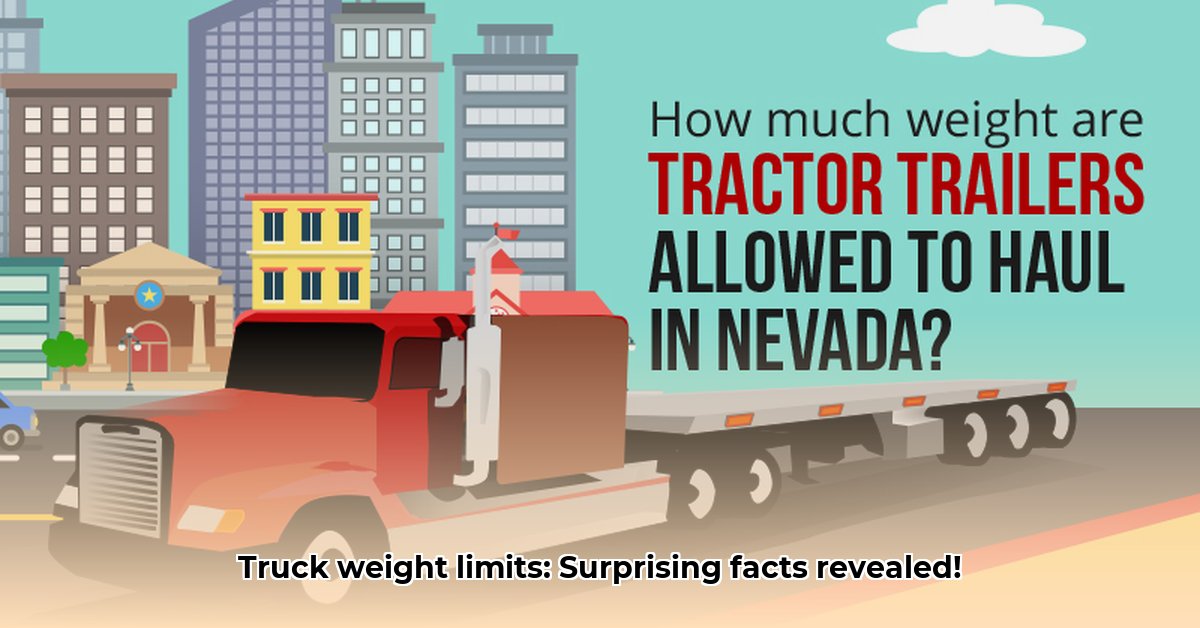
Understanding Gross Vehicle Weight (GVW) and Axle Weight Limits
Determining the maximum weight a tractor-trailer can haul involves understanding several key factors. The most critical is the Gross Vehicle Weight (GVW), representing the total weight of the truck, trailer, and cargo. In the United States, the federal GVW limit is often 80,000 pounds (36,287 kg), but this can vary by state and even by specific route conditions. Think of it like a speed limit—a general guideline with occasional exceptions. However, even with a legal GVW, exceeding individual axle weight limits is a serious violation. These limits depend on the number of axles and their spacing, designed to protect roadways and ensure safe operation. Overloading a single axle, regardless of the overall GVW, results in penalties. For more detailed cost information, see this helpful guide.
Axle Weight: A Critical Factor in Legal and Safe Operation
Proper weight distribution is crucial for safe and legal operation. Exceeding axle weight limits, even if the GVW remains within regulations, can lead to fines and safety risks. The weight on each axle depends on the load's distribution. A simple analogy would be balancing a seesaw—uneven weight creates instability. Effective weight distribution prevents overloading any single axle, minimizing damage to roads and enhancing overall stability.
Key Takeaway: Understanding both the overall GVW and the weight distribution across individual axles is paramount. Failing to do so can result in substantial fines and potential accidents.
Global Variations in Weight Limits and Regulations
Weight regulations vary significantly across countries. While the US 80,000-pound (36,287 kg) limit is common in many regions, some places permit significantly heavier loads. Australia, for example, allows massive road trains with multiple trailers exceeding hundreds of thousands of pounds. This illustrates the considerable difference in weight regulations across the world. Therefore, international haulage demands meticulous research and strict adherence to local regulations in each country traversed.
Trailer Types and Their Impact on Weight Capacity
The trailer type significantly influences the permissible cargo weight. A lightweight, open flatbed trailer can carry more than a heavier enclosed trailer, such as a dry van or reefer (refrigerated trailer). The added weight of insulation or refrigeration units reduces the available cargo capacity. This is akin to the difference between a lightweight backpack and a heavy suitcase—the heavier option allows for less contents.
Optimizing Cargo Weight: Practical Strategies and Steps
Maximizing cargo weight while remaining within legal limits necessitates careful planning. Following these steps ensures both legal compliance and efficiency:
- Precise Weighing: Use accurate scales to measure cargo weight. Inaccurate weighing leads to violations and potential safety concerns.
- Even Weight Distribution: Spread the load evenly across the axles to avoid overloading any single one. This step is critical for preventing axle damage and maintaining vehicle stability.
- Route Planning: Check weight limits along your planned route. This may involve finding alternative routes or planning extra stops at weigh stations to ensure compliance.
- Comprehensive Record Keeping: Maintain thorough records of weights, permits, and delivery manifests for potential audits and to demonstrate adherence to regulations.
“Accurate weighing is non-negotiable; it's the cornerstone of compliance and safety,” states Dr. Emily Carter, PhD, Transportation Engineer at the National Transportation Safety Board.
Sample Axle Weight Limits (Consult Local Regulations)
The table below provides illustrative examples. These values are for illustration only and vary significantly based on location and axle configuration. Always confirm the exact limits with the relevant authorities for your specific route.
| Number of Axles | Example Axle Weight Limit (lbs) |
|---|---|
| Single Axle | 20,000 |
| Tandem Axles | 34,000 per axle |
| Tri-Axle | 20,000 per axle (example) |
International Hauling: Navigating Complex Regulations
International shipping presents unique challenges. Each country has its own set of rules, making meticulous planning essential. Non-compliance results in delays, substantial fines, and logistical nightmares. Thorough research into weight regulations and customs procedures is crucial for international operations.
The Future of Trucking Weight: Technological Advances and Sustainability
Technological advancements and road infrastructure improvements might lead to increased GVW limits. However, safety and environmental sustainability remain paramount considerations. The trucking industry constantly balances efficiency with responsible practices. Thus, future weight limits will be shaped by safety, environmental concerns, and ongoing technological developments.
Calculating Axle Weight Distribution for Overweight Loads (Detailed Guide)
Accurately calculating axle weight distribution is vital, particularly with overweight loads. Understanding the concepts of GVWR, axle weight limits, and relevant regulations is crucial. While simplified methods offer quick estimates, precise calculations involving moments—weight multiplied by distance from the axle—provide greater accuracy. Specialized software assists in handling the complexity of multi-component loads with irregular shapes.
Step-by-Step Guide for Precise Calculation:
- Individual Component Weighing: Accurately weigh the tractor, trailer, and cargo separately.
- Distance Measurement: Carefully measure the distance of each component's center of gravity to the front and rear axles.
- Moment Calculation: Multiply each component's weight by its distance from each axle.
- Moment Summation: Add all moments for both axles separately.
- Axle Weight Solution: Solve a system of equations (or use specialized software) to determine the weight on each axle.
Overweight situations demand meticulous calculations to ensure compliance with regulations. Penalties for violations are severe.
"A thorough understanding of weight distribution principles and adherence to strict calculations is essential for avoiding costly penalties and ensuring safe operations,” emphasizes John Miller, Logistics Manager at a major trucking company.
Regular vehicle maintenance and comprehensive driver training are critical aspects of safety and compliance. These factors prevent equipment failures and ensure understanding of weight regulations, leading to enhanced operational safety.